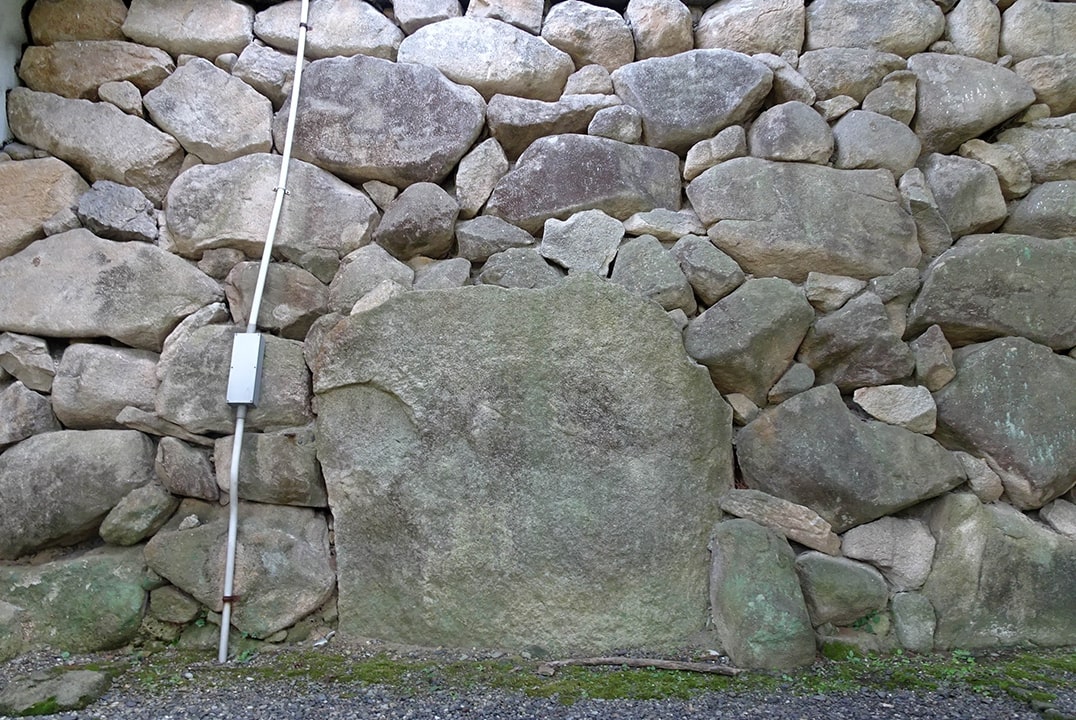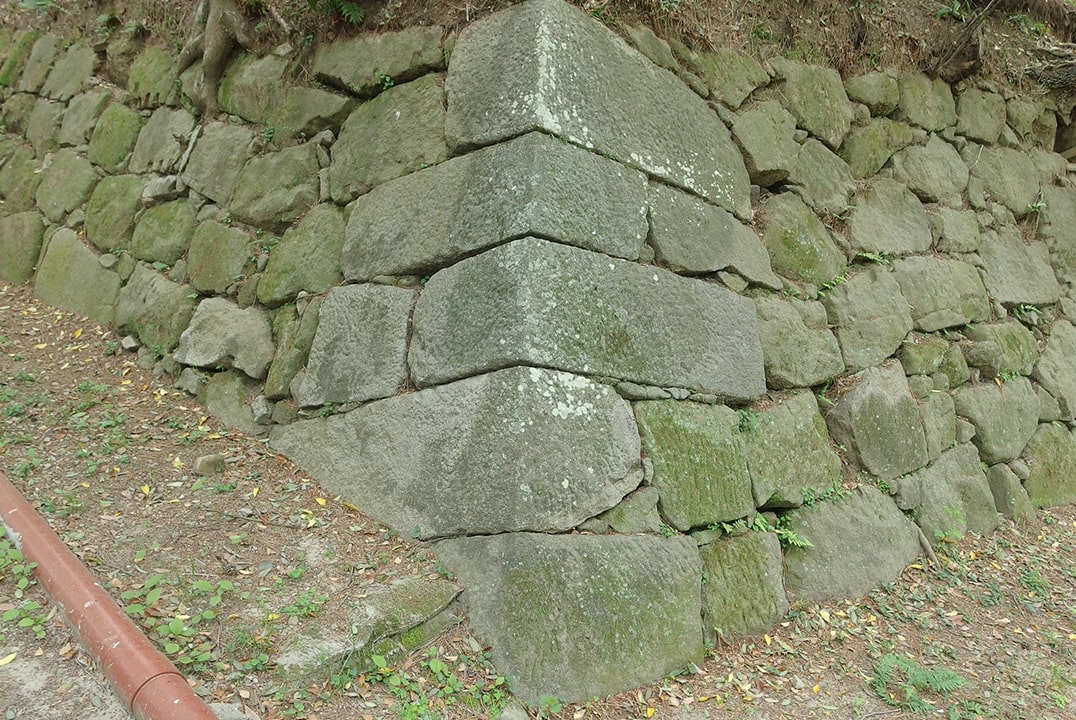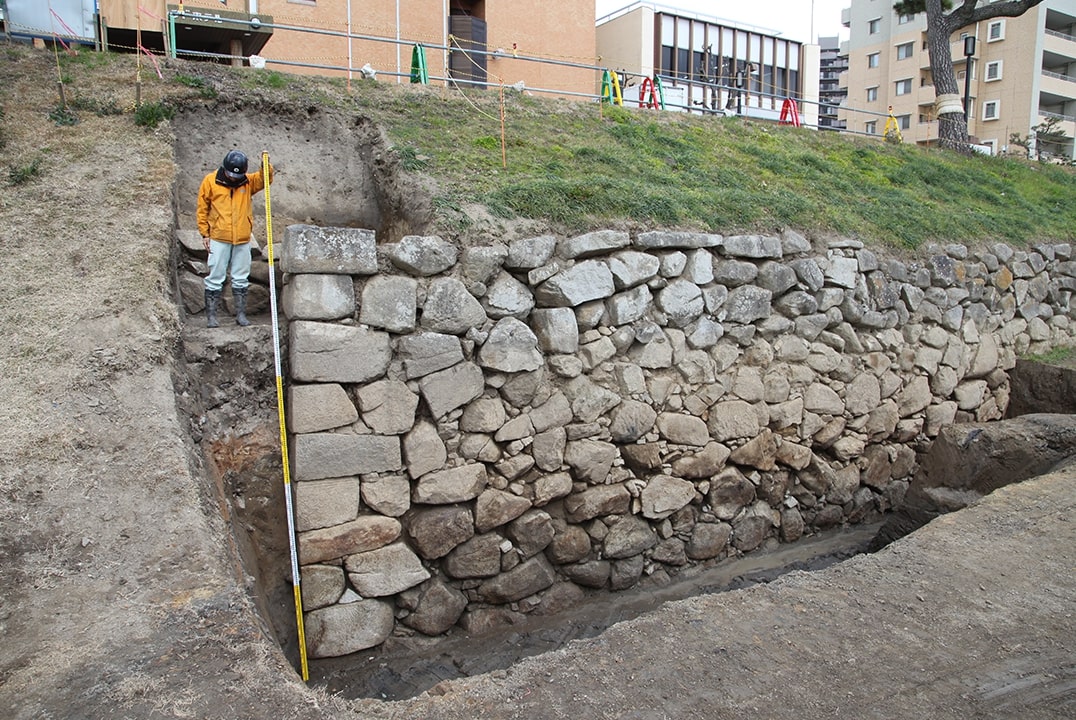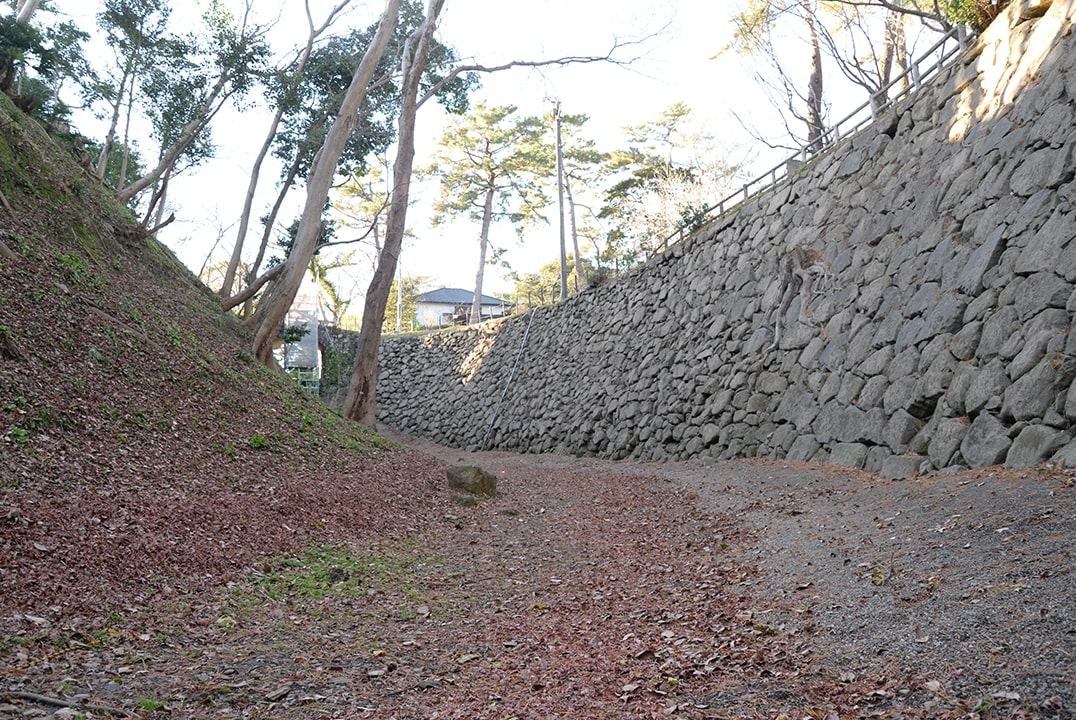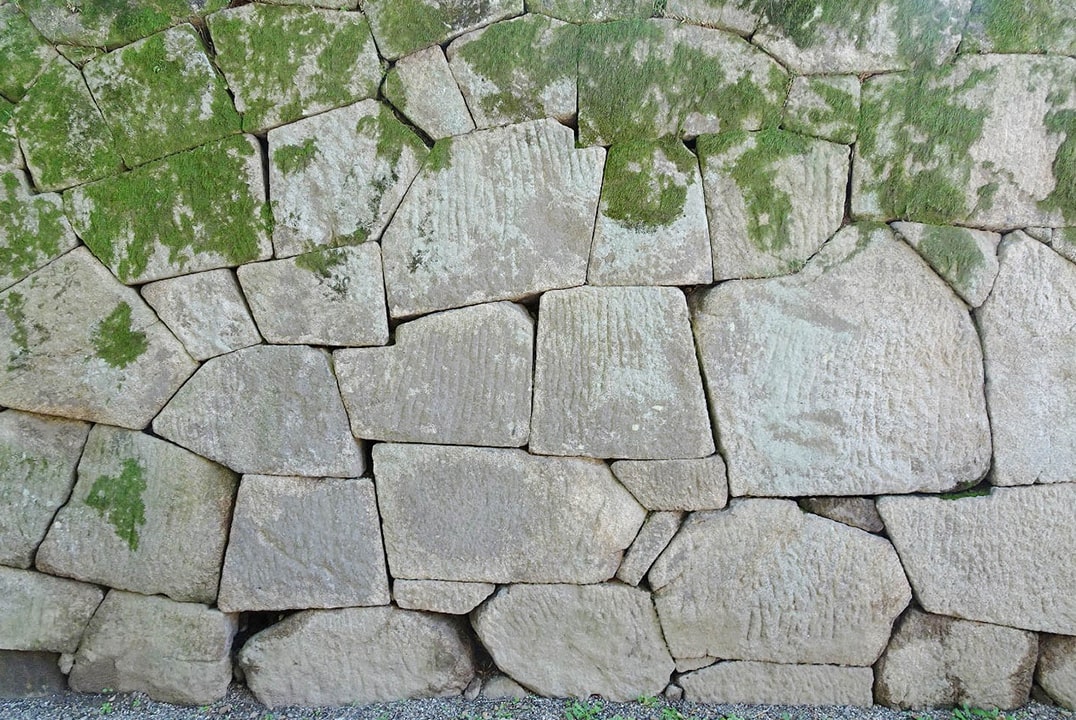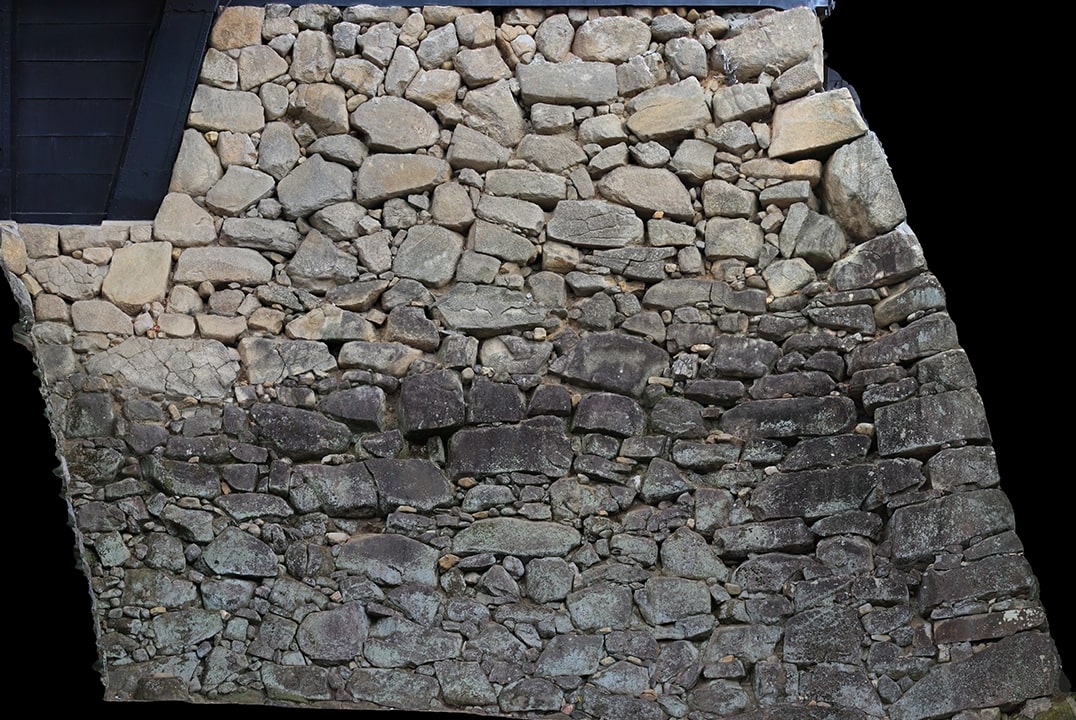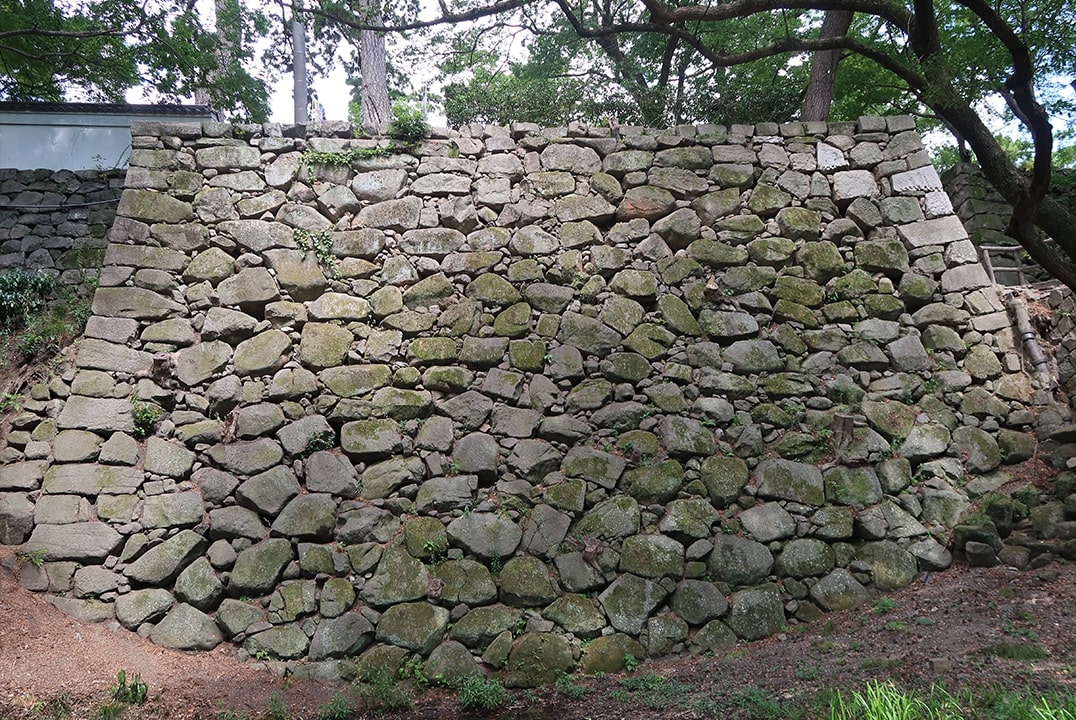Castle Layout and Stone Walls Surrounding the Honmaru (Main Baily)
Castle Layout Surrounding the Honmaru (Main Baily)
Okazaki Castle’s central precinct, the Honmaru, is situated on the river terrace’s high point. Deep dry moats have been carved from the terraces around the northern edge, leading to the formation of various other baileys. Between the Jibutsudo Kuruwa (Jibutsudo bailey) and the Honmaru entrance is a narrow stretch of ground known as the Obi Kuruwa (Obi bailey). This section contained obstructions and turns to ensure continual exposure to the yokoya flank defense ports. These strong defensive features around the Honmaru were constructed in the Sengoku (Warring States) period by Tokugawa Ieyasu’s grandfather, Matsudaira Kiyoyasu (1511-1535) and later completed by Tokugawa Ieyasu.
Stone walls around Honmaru
Prior to Tokugawa Ieyasu relocating to the Kanto districts in 1590, Okazaki Castle was a solid castle constructed from earthworks including cleverly arranged dry moats and earthen embankments. Following Ieyasu’s transfer, the Toyotomi allied daimyo, Tanaka Yoshimasa was installed here between 1590 and 1600 as the Lord of Okazaki Castle, constructing the castle keep’s stone base, and completing the stone work lining the gates and moats surrounding the Honmaru (main bailey). Even now, a variety of stone wall stacking methods and unique curving stone walls around the baileys can be seen. The older stone walls used natural, untreated piled stone, with later work including roughly split stones. The more modern stone wall construction features cut and smoothly processed stone work.
The eastern and northern faces of the keep’s stone base feature larger, more decorative stones. Alternatively, the stone walls of the Honmaru Otemon gate features individually cut and laid stones eliminating gaps, and the surface of the mostly granite stone taken from the Okazaki region, is skillfully finished.
Okazaki Park(History of Okazaki Castle) >
Okazaki Castle Outer Moat Enclosure >

Castle Layout and Stone Walls Surrounding the Honmaru (Main Baily)
Castle Layout Surrounding the Honmaru (Main Baily)
Okazaki Castle’s central precinct, the Honmaru, is situated on the river terrace’s high point. Deep dry moats have been carved from the terraces around the northern edge, leading to the formation of various other baileys. Between the Jibutsudo Kuruwa (Jibutsudo bailey) and the Honmaru entrance is a narrow stretch of ground known as the Obi Kuruwa (Obi bailey). This section contained obstructions and turns to ensure continual exposure to the yokoya flank defense ports. These strong defensive features around the Honmaru were constructed in the Sengoku (Warring States) period by Tokugawa Ieyasu’s grandfather, Matsudaira Kiyoyasu (1511-1535) and later completed by Tokugawa Ieyasu.
Stone walls around Honmaru
Prior to Tokugawa Ieyasu relocating to the Kanto districts in 1590, Okazaki Castle was a solid castle constructed from earthworks including cleverly arranged dry moats and earthen embankments. Following Ieyasu’s transfer, the Toyotomi allied daimyo, Tanaka Yoshimasa was installed here between 1590 and 1600 as the Lord of Okazaki Castle, constructing the castle keep’s stone base, and completing the stone work lining the gates and moats surrounding the Honmaru (main bailey). Even now, a variety of stone wall stacking methods and unique curving stone walls around the baileys can be seen. The older stone walls used natural, untreated piled stone, with later work including roughly split stones. The more modern stone wall construction features cut and smoothly processed stone work.
The eastern and northern faces of the keep’s stone base feature larger, more decorative stones. Alternatively, the stone walls of the Honmaru Otemon gate features individually cut and laid stones eliminating gaps, and the surface of the mostly granite stone taken from the Okazaki region, is skillfully finished.

